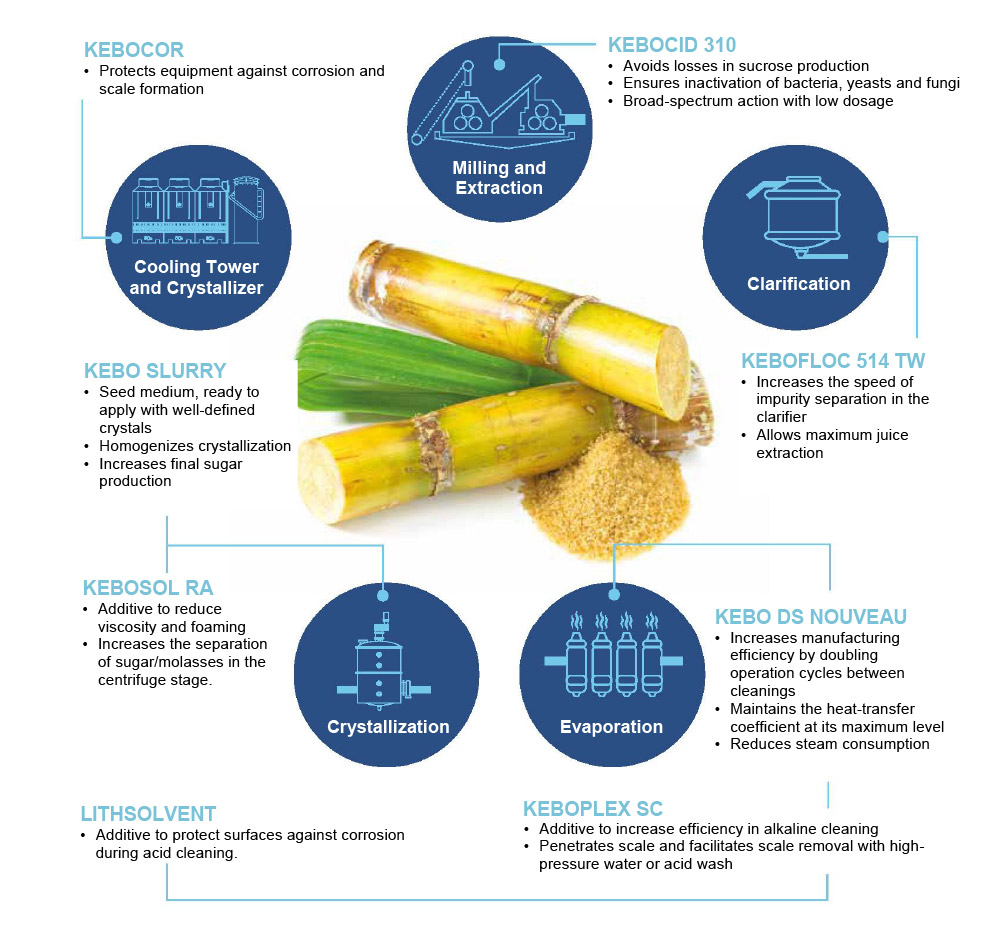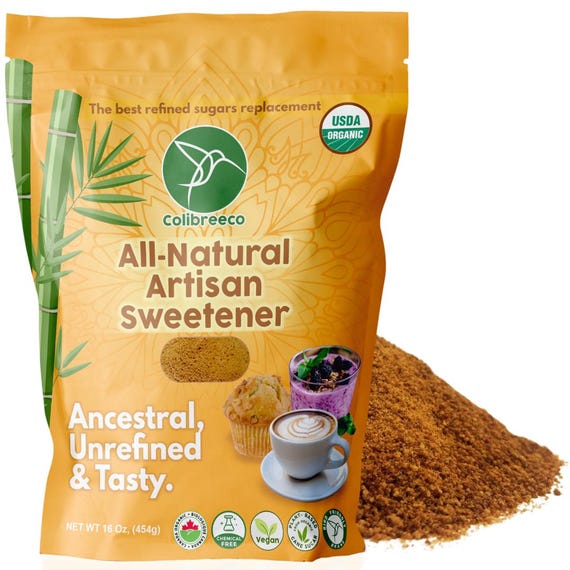Exploring the Versatile Uses of Sugar Cane Beyond Sweeteners
Sugar Cane is frequently connected entirely with sweeteners, yet its applications extend much past. This flexible crop plays a critical duty in various industries, consisting of bioplastics and biofuels. Additionally, its fibers add to lasting building and textiles. The financial implications of sugar Cane manufacturing better underscore its significance. As advancements continue to emerge, the possibility of sugar Cane to drive eco-friendly and financial improvements becomes increasingly evident. What other surprises does this resilient plant hold?
The Function of Sugar Cane in Biofuels
As nations seek lasting energy resources, sugar Cane has actually arised as an essential player in the biofuels field. This tropical plant is abundant in sucrose, which can be fermented to produce ethanol, a sustainable gas alternative to fossil gas. The cultivation of sugar Cane for biofuel manufacturing not just lowers greenhouse gas discharges but additionally contributes to energy protection, specifically in sugar-producing countries.
Sugar cane-derived ethanol can be combined with gas, boosting its octane rating and reducing dependence on non-renewable sources. The byproducts of sugar Cane processing, such as bagasse, are valuable for generating electrical energy, making the whole manufacturing cycle energy-efficient.
Research remains to explore sophisticated approaches for maximizing energy return from sugar walking stick, solidifying its duty in the shift to cleaner power options. As international demand for lasting fuels increases, sugar Cane sticks out as an integral part of the biofuel sector.
Sugar Cane as a Resource of Bioplastics
Although the environmental influences of plastic air pollution are significantly worrying, sugar Cane supplies an encouraging choice as a resource of bioplastics. Originated from renewable energies, bioplastics made from sugar Cane can significantly minimize reliance on petroleum-based plastics. These bioplastics are generated through the fermentation of sugars extracted from the cane, resulting in materials that can be compostable or biodegradable, depending upon their formula.
Using sugar Cane bioplastics not only reduces carbon emissions but also promotes lasting farming techniques. By making use of agricultural waste and by-products, the general environmental footprint of manufacturing is minimized. In addition, items made from sugar Cane bioplastics can flawlessly incorporate right into existing waste administration systems, attending to worries concerning waste accumulation.
As markets seek sustainable services, sugar cane-based bioplastics represent a viable choice that lines up with global efforts to deal with plastic contamination and promote a circular economic climate.
Medicinal Applications of Sugar Walking Stick
Sugar Cane is acknowledged for its antioxidant residential or commercial properties, which add to various health advantages. Additionally, it has actually been utilized in typical treatments throughout cultures, highlighting its significance in natural medication. These qualities underscore the capacity of sugar Cane in the area of medicinal applications.
Antioxidant Characteristics of Walking Cane
Various researches have disclosed that sugar Cane possesses substantial antioxidant residential or commercial properties, making it a beneficial component in medicinal applications. The phenolic compounds located in sugar walking stick, such as flavonoids and phenolic acids, add to its capacity to neutralize complimentary radicals, thereby minimizing oxidative stress in the body. This antioxidant task is linked to different wellness benefits, including boosted cardiovascular health and boosted immune feature. In addition, sugar Cane extracts have been shown to display anti-inflammatory effects, which can better support overall health. By combating oxidative damage, sugar Cane might contribute in the avoidance of persistent diseases, making it a fascinating subject of research for its potential restorative uses in contemporary medicine.
Traditional Treatments and Makes Use Of
While contemporary medication commonly depends on artificial substances, traditional remedies using sugar Cane emphasize its longstanding relevance in various cultures. In numerous tropical areas, sugar Cane juice has actually been used as a natural remedy for ailments such as dehydration and gastrointestinal problems. Its high water content and essential nutrients make it a favored therapy for urinary system system infections and kidney stones. Furthermore, sugar Cane is believed to have anti-inflammatory homes, aiding in the relief of sore throats and respiratory problems. Herbal remedies commonly integrates sugar Cane in mixtures to improve energy and enhance general health. These old-time methods underscore the adaptability of sugar walking stick, extending its worth beyond sweet taste to encompass wellness and wellness applications.
Eco-Friendly Building And Construction Products From Sugar Walking Cane
Sugar walking cane, commonly acknowledged for its pleasant return, is gaining interest as a source of environment-friendly construction materials. These materials supply sustainable building remedies, featuring naturally degradable compounds that decrease environmental effect. Additionally, sugar cane-derived items supply effective insulation homes, boosting energy performance in structures.
Lasting Structure Solutions
As the worldwide need for sustainable building and construction products rises, ingenious options stemmed from sugar Cane have actually arised as a viable alternative. This renewable energy offers various applications in green building remedies, particularly through its byproducts. Sugar Cane fibers, understood for their toughness and longevity, can be utilized in developing insulation products and composite panels. In addition, the juice and molasses from sugar Cane can be processed into bio-based adhesives, decreasing dependence on petroleum-based items. Using sugar Cane not only decreases waste however also adds to lower carbon emissions throughout manufacturing. In addition, integrating these materials right into building and construction techniques supports the round economic climate, advertising sustainability while attending to the pushing ecological obstacles encountered by the building sector.
Naturally Degradable Composite Products
Naturally degradable composite materials have garnered focus as lasting choices in building, particularly those stemmed More about the author from sugar walking cane. These materials utilize the fibrous results of sugar walking stick, such as bagasse, to develop compounds that are both solid and lightweight. By including these natural fibers, manufacturers can generate materials that lower reliance on standard plastics and non-renewable resources. The sustainable nature of sugar Cane compounds not only decreases ecological effect however also sustains agricultural economic climates by supplying additional profits streams for farmers. Furthermore, the biodegradability of these composites assurances that they do not add to lasting waste in garbage dumps. As the building sector seeks greener options, sugar cane-derived composites present an encouraging course towards extra eco-friendly building practices.

Insulation Features and Conveniences
The insulation properties of environment-friendly construction products originated from sugar Cane offer significant benefits in energy efficiency and climate control. Sugar Cane fibers have all-natural protecting top qualities that assist regulate interior temperature levels, lowering the demand for extreme heating or cooling. This particular adds to reduce power consumption, promoting sustainability in building practices. In enhancement, using sugar cane-based insulation materials is helpful for interior air high quality, as they are much less most likely to produce unstable organic compounds (VOCs) contrasted to traditional insulation products. These products are biodegradable, aligning with eco-conscious building and construction goals. As the building and construction industry looks for greener choices, sugar cane-derived insulation stands out as an encouraging option that integrates functionality with ecological responsibility, supporting both power cost savings and eco-friendly preservation.
Sugar Cane in the Textile Market
Frequently ignored, sugar Cane plays a significant duty in the fabric market, mainly with the manufacturing of sustainable fibers. These fibers, stemmed from the plant's by-products, are progressively acknowledged for their environment-friendly residential or commercial properties. Sugar Cane fibers, such as bagasse and sisal, are sturdy and naturally degradable, making them appealing choices to standard artificial fibers.
Their usage in fabrics promotes sustainability by reducing reliance on petroleum-based products while likewise providing a method for waste reduction from sugar manufacturing. Additionally, developments in textile handling have actually allowed producers to mix sugar Cane fibers with various other materials, enhancing the total top quality and convenience of materials.
This change towards integrating sugar Cane in textiles mirrors a wider pattern in the market, aiming for eco liable techniques. As demand for sustainable materials proceeds to increase, sugar walking stick's function in textiles might increase, supplying both economic and environmental advantages.
Nutritional Benefits and Pet Feed

Additionally, sugar Cane consists of important minerals and vitamins that boost the nutritional profile of animal feed, boosting immunity and total well-being. Its wonderful preference and palatability make it an appealing feed choice, urging feed consumption amongst pets. By including sugar Cane into their diet plans, livestock producers can minimize reliance on traditional feed sources, potentially reducing feed costs while preserving pet health and productivity. Sugar Cane emerges as a sustainable and healthy choice in the area of pet farming.
The Economic Influence of Sugar Cane Manufacturing
While lots of agricultural products contribute to regional economies, sugar Cane production stands out because of its substantial financial effect throughout numerous areas. This versatile plant not only gives work possibilities in circulation, processing, and farming however additionally supports ancillary markets such as transport and manufacturing. In countries like Brazil and India, sugar Cane is a vital vehicle driver of rural development, promoting financial security and improving source of incomes.
The byproducts of sugar cane, including ethanol and molasses, better diversify income streams, minimizing and developing additional markets reliance on conventional sugar - What Is Sugar Cane Used For. As global need for renewable power rises, the duty of sugar Cane in biofuel production is ending up being significantly popular, bring in financial investments and increasing local economic situations. Overall, the financial ramifications of sugar Cane production are profound, influencing both regional work markets and more comprehensive economic fads in regions reliant on this important plant
Frequently Asked Inquiries
Just How Is Sugar Cane Processed Into Biofuels?
The processing of sugar Cane right into biofuels entails extracting juice, fermenting it right into ethanol, and refining the item. This approach uses the plant's natural sugars, changing them right into renewable resource sources for numerous applications.
What Are the Environmental Benefits of Utilizing Sugar Walking Cane?
The environmental advantages of using sugar Cane include reduced greenhouse gas discharges, enhanced dirt health and wellness via lasting farming practices, and reduced dependence on nonrenewable fuel sources, which jointly add to an extra sustainable and green farming system.

Can Sugar Cane Be Grown in Any Type Of Environment?

Sugar Cane grows in tropical and subtropical environments, needing warm temperature levels, ample sunlight, and enough rainfall. Its development is restricted in colder areas, making it unsuitable for arctic or warm environments where frost takes place.
What Are the Historic Uses Sugar Walking Stick?
Historically, sugar Cane offered various purposes past sweetening - What Is Sugar Cane Used For. It was made use of for producing rum, as a resource of biofuel, in standard medicine, and for crafting materials like paper and molasses, showcasing its diverse applications throughout various societies
Exactly How Does Sugar Cane Effect Citizen Economies?
The effect of sugar Cane on regional economies is substantial, supplying Related Site work, increasing farming industries, and cultivating profession. Its cultivation supports country source of incomes and promotes neighborhood markets, adding to total economic development and community development.
The economic effects of sugar Cane production better highlight its relevance. Obtained from sustainable sources, bioplastics made from sugar Cane can considerably reduce reliance on petroleum-based plastics. Naturally degradable composite products have actually amassed interest Resources as lasting choices in building and construction, especially those derived from sugar walking stick. These materials utilize the coarse byproducts of sugar cane, such as bagasse, to produce compounds that are both light-weight and solid. While many farming commodities add to local economic situations, sugar Cane manufacturing stands out due to its significant economic impact throughout various regions.